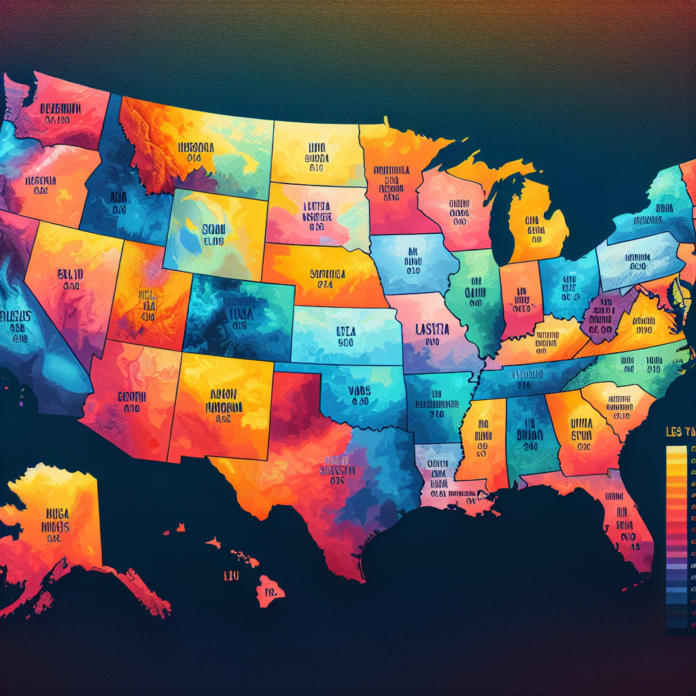States with Strict Vehicle Emissions Regulations
States with Strict Vehicle Emissions Regulations
In recent years, an increasing number of states in the U.S. have taken significant steps to reduce vehicle emissions in an effort to combat climate change and improve air quality. These states are implementing stringent regulations aimed at minimizing the environmental impact of automobiles. Below are some of the states leading the charge in enforcing heavy vehicle emissions restrictions.
California
California is often at the forefront of environmental regulations. The state has adopted ambitious emissions standards that exceed federal requirements. Its Advanced Clean Cars program mandates lower greenhouse gas emissions and encourages the adoption of electric vehicles. California also has a cap-and-trade program aimed at reducing overall emissions across various sectors.
New York
New York has implemented strict vehicle emissions standards, aligning closely with California’s regulations. The state has also set a goal to have 100% zero-emission vehicles by 2035, which includes a push for electric and hybrid vehicles, along with incentives for consumers to transition away from gasoline-powered cars.
Washington
Washington has enacted legislation to reduce vehicle emissions significantly. The state has adopted a Clean Cars program that mirrors California’s standards, promoting cleaner vehicles and increasing the availability of zero-emission options. Washington aims to cut greenhouse gas emissions by 45% below 1990 levels by 2030.
Oregon
Oregon has joined a growing number of states implementing stringent vehicle emissions laws. The state has established a Clean Vehicle program, which promotes electric and hybrid vehicles while setting ambitious emissions reduction targets. Oregon’s goal is to have 70% of new car sales be zero-emission vehicles by 2035.
Massachusetts
Massachusetts has embraced aggressive vehicle emissions regulations in an effort to improve air quality and reduce greenhouse gas emissions. The state has adopted California’s emissions standards and is actively working towards increasing the number of electric vehicles on the road, with a target of 750,000 zero-emission vehicles by 2030.
New Jersey
New Jersey is also taking significant steps to reduce vehicle emissions. The state has adopted California’s stringent vehicle emissions standards and is working to expand its electric vehicle infrastructure. New Jersey aims to have 330,000 electric vehicles on the road by 2025.
Connecticut
Connecticut has implemented regulations to lower vehicle emissions, following California’s lead. The state is focused on increasing the adoption of electric vehicles and has set a goal to have 125,000 electric vehicles by 2025. Connecticut is also investing in charging infrastructure to support this transition.
Illinois
Illinois has taken action to reduce vehicle emissions through the adoption of stricter regulations. The state has launched several initiatives aimed at promoting electric vehicles, including incentives for consumers and investments in charging infrastructure. Illinois aims to reduce greenhouse gas emissions by 26% by 2025.
Colorado
Colorado has enacted laws to reduce vehicle emissions, focusing on promoting cleaner vehicles and incentivizing electric vehicle adoption. The state has set a goal to create a network of charging stations to support the growing number of electric vehicles on the road.
Maryland
Maryland has adopted California’s vehicle emissions standards and is committed to reducing greenhouse gas emissions. The state is actively promoting electric vehicle use and has set a target of 300,000 electric vehicles by 2025. Maryland is also investing in charging infrastructure to facilitate this transition.
Rhode Island
Rhode Island is working towards stricter vehicle emissions regulations, aligning with California’s standards. The state has set ambitious goals for electric vehicle adoption and is implementing initiatives to improve charging infrastructure.
Vermont
Vermont has taken a strong stance on vehicle emissions by adopting California’s emissions standards. The state is committed to increasing the number of electric vehicles on the road and has set a target for 50,000 electric vehicles by 2025.
Hawaii
Hawaii is leading the way in promoting clean transportation solutions. The state has set a goal to transition to 100% renewable energy and is actively encouraging the adoption of electric vehicles. Hawaii aims to have 100% of its ground transportation be powered by renewable energy by 2045.
Additional Information
These states are not only focusing on reducing vehicle emissions but are also investing in renewable energy sources and enhancing public transportation systems. Many have established partnerships with local governments and private sectors to develop comprehensive strategies for sustainability.
Moreover, the federal government has also shown interest in promoting cleaner transportation, which could lead to more uniform regulations across the country. The American Jobs Plan proposes significant investments in electric vehicle infrastructure and incentives for consumers to switch to cleaner alternatives.
As more states adopt stringent vehicle emissions regulations, the auto industry may face increased pressure to innovate and produce cleaner vehicles. This shift could lead to advancements in electric vehicle technology, battery efficiency, and charging infrastructure, ultimately benefiting consumers and the environment.
In conclusion, the movement towards stricter vehicle emissions regulations is gaining momentum across the United States, with several states taking the lead in this critical effort to protect the environment and promote public health.


